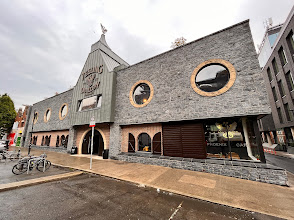
Dublin's Demographic Landscape: A Growing, Diverse Population with Increasing Immigrant Communities
Posted by Webjuice SEO Agency in Dublin on
Dublin, Ireland’s capital, is home to a vibrant and diverse population, with significant changes seen over the past few decades. As of the 2022 census, the population of Dublin city was recorded at 592,713, while the broader Dublin metropolitan area, including its suburbs, reached a population of 1,263,219. The overall population of County Dublin was 1,458,154, while the Greater Dublin Area, which includes surrounding counties like Kildare, Meath, and Wicklow, had a total population of 2,082,605.
A closer look at the demographics of Dublin reveals a city with a growing number of international residents. As of 2016, the largest immigrant groups in Dublin were from Poland, the UK, and Romania, with substantial populations also from Lithuania, Brazil, Italy, India, Spain, and Latvia. Together, these groups contribute to the city’s cultural and social diversity. Notably, Dublin houses a significant portion of Ireland’s immigrant population, with many newcomers arriving from EU countries like Poland and Lithuania, as well as non-EU nations such as Pakistan, Brazil, and Nigeria.
The rise in immigration, especially since the late 1990s, has significantly changed the fabric of Dublin. Immigrants now make up a larger proportion of Dublin's population compared to other regions in Ireland. For example, about 60% of Ireland’s Asian population resides in Dublin, highlighting the capital’s status as the primary destination for non-European migrants. Furthermore, the city is the primary location for non-Catholic migrants, reflecting broader shifts in religious identity. While Catholicism remains dominant, regular church attendance has drastically declined, with only 14% of Dubliners attending mass regularly as of 2011, and less than 2% in some areas.
The ethnic makeup of Dublin continues to evolve, with the 2022 census showing that County Dublin was predominantly white (80.4%), with the largest groups being white Irish (68%) and other white backgrounds (12%). Asians made up 5.8% of the population, while Black residents accounted for 2.2%. Notably, 8.5% of the population did not specify their ethnicity. In Dublin city itself, white residents accounted for 76.8%, with significant proportions of Asian (5.1%), Black (1.6%), and other ethnicities represented as well.
In addition to the city’s changing ethnic profile, Dublin faces challenges related to housing and homelessness. As of 2018, approximately 1,367 families in the Dublin region were living in emergency accommodation, a figure that highlights ongoing issues in securing stable housing for many residents.
Overall, Dublin's demographics paint a picture of a dynamic and diverse city, one that continues to evolve due to immigration, secularization, and changing social structures. With its growing population and increasing diversity, Dublin is becoming an even more prominent global city within the European and international context.